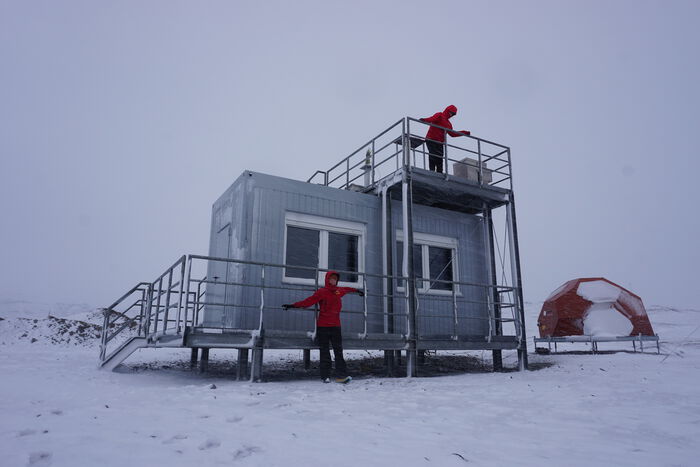A research team from the University of Padova, including (returning) CEED postdoc Sara Callegaro, reported in Nature Communications (Capriolo et al., 2020) direct evidence of abundant CO2 in basaltic rocks from the end-Triassic Central Atlantic Magmatic Province (CAMP). Part of the carbon budget comes from the mantle and/or the deep crust, adding to shallower carbon sources from volcano-sedimentary basins. A degassing scenario disturbingly similar to the one mankind is responsible for in the Anthropocene.
The CEED blog - Page 7
An all-CEED team, led by Krister S. Karlsen, recently developed an Python-based algorithm that automatically generates grids of the seafloor age. Using their new algorithm now in press with Computers & Geosciences, they generated the first set of palaeo-seafloor age grids that extend back from present-day to the mid-Palaeozoic (~400 Million years ago). Using the age of the oceanic lithosphere to determine bathymetry, the grids were also used to estimate changes in sea level through time which showed good agreement with the independent sea level record.
It is something that many of us can only dream of, but CEED PhD student Maaike Weerdesteijn just returned from a two-month stay in Antarctica. She took time off from her official PhD research to gain additional experience in polar fieldwork (also having been in Greenland last year as part of CEED’s MAGPIE project).
Does everyday sexism exist within the scientific community? The answer is unfortunately yes, still. What can we do to overcome this persisting problem? Well, the Did this really happen?! team, which Maëlis Arnould, Postdoctoral researcher at CEED, is part of, has decided to increase awareness about sexist situations encountered by female scientists. How? By drawing comic strips based on real anonymous experiences which describe such behaviours to denounce them.
Fossil fuels are typically generated within buried organic-rich sediments over long geological timescales. However, these processes may be accelerated when the sediments are exposed to migrating magmatic fluids, such as those related to nearby volcanic activity. A new international collaborative study in Scientific Reports led by CEED PhD student Alexandra Zaputlyaeva including CEED researchers Adriano Mazzini and Morgan Jones, investigates the ongoing reactions below the largest active mud eruption on Earth – Lusi - located in north-east Java (Indonesia). Results reveal that hydrocarbon generation is occurring ~4.5 km below Lusi and that this is largely driven by the recent magmatism.

The CEED blog covers some behind-the-scenes about our latest research and activities. The contributors are a mix of students and staff from The Centre for Earth Evolution and Dynamics, Dept. of Geosciences, University of Oslo, Norway.






